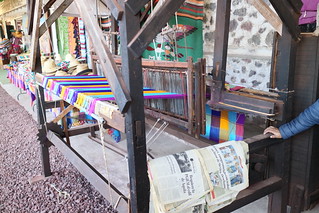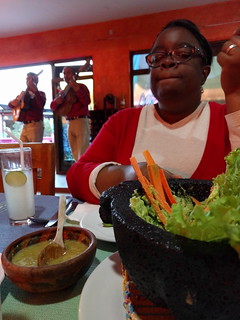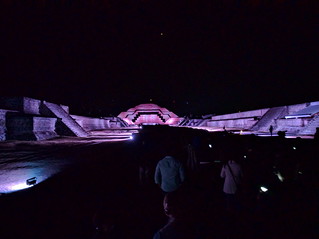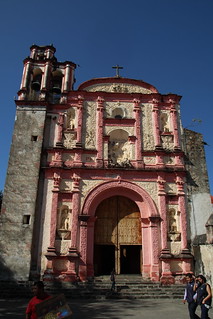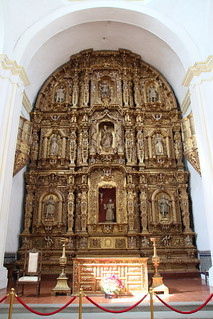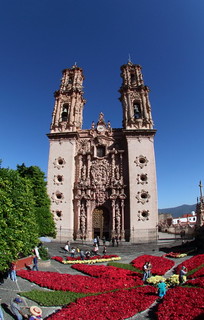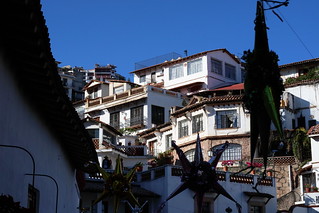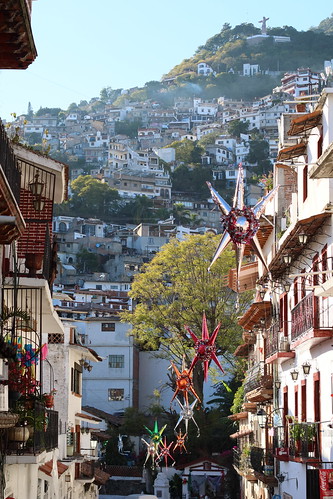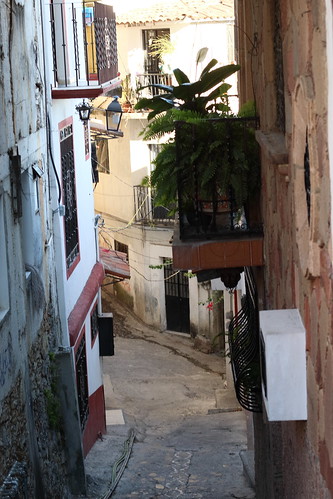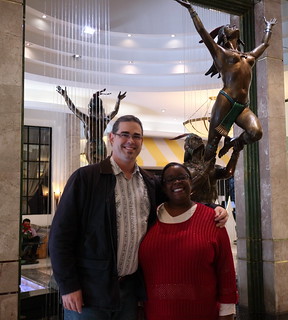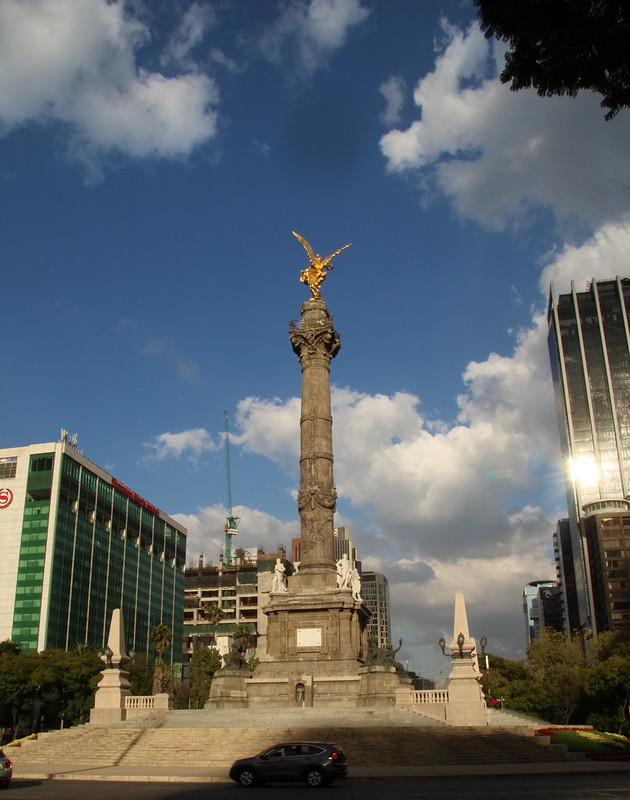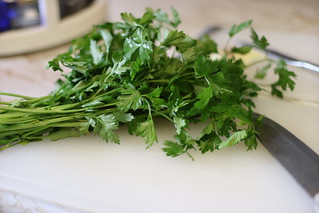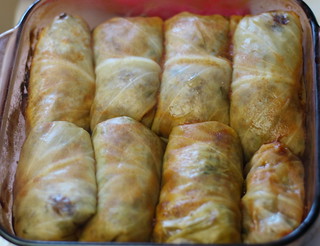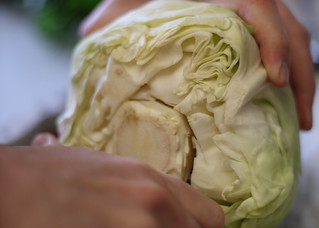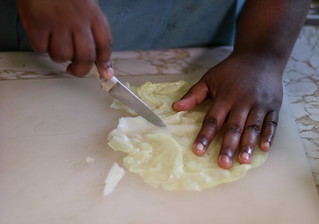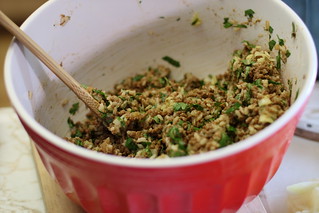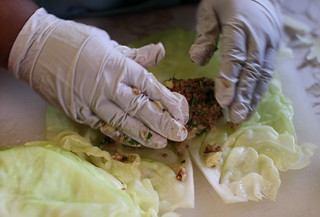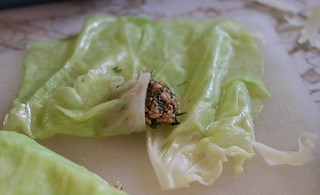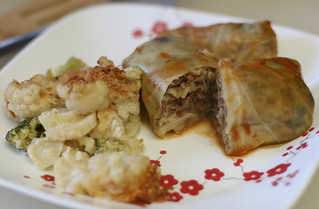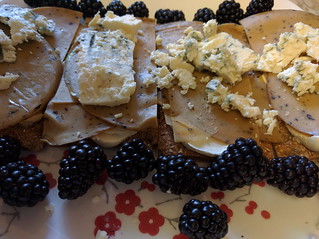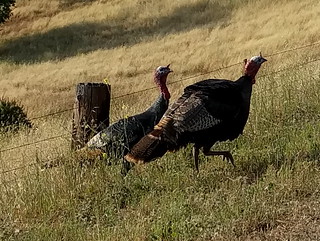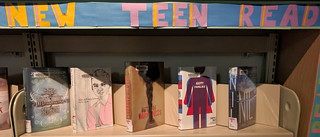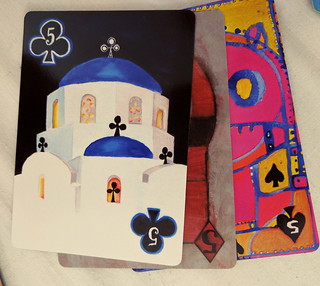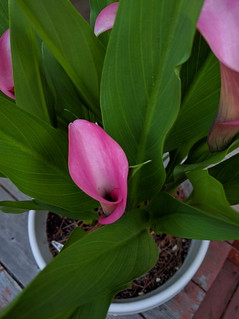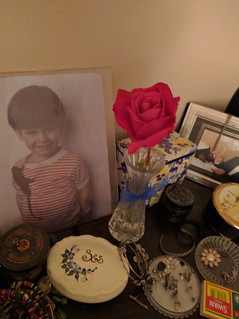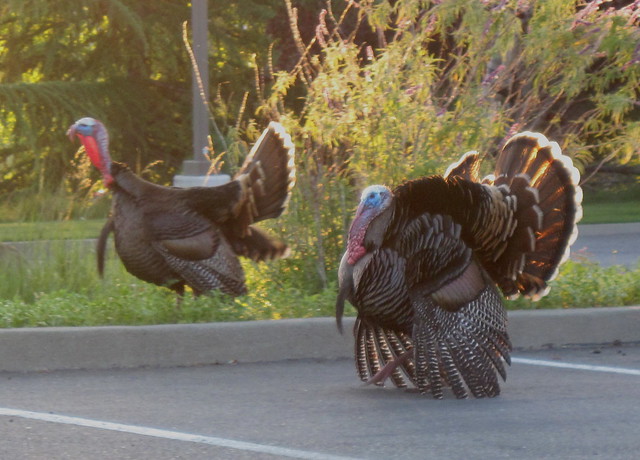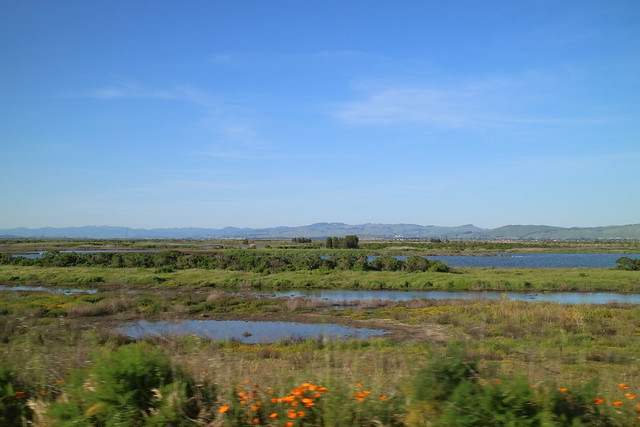We had a gradual beginning to our next outing, and were glad to meet our driver in late afternoon for a night outing. What would have been a forty minute drive outside of the city was at least an hour, due to the usual snarl of traffic, but we eventually saw a massive pyramid thrusting up against house-laden hills. As we got closer, we could see that there were people on top… which our driver said was all very well, except that myriad people climb the hundreds of stairs each year to the pyramid tops… and then get sick and dizzy, and fall. He advised us, if we had any altitude sickness, to stay on the ground, and we didn’t need to be told twice.
Before we got to the pyramid, we stopped at a tiny workshop where a man in a respirator mask was carving obsidian. We were met by a guide who explained how maguey – or agave – was central to the life of the pre-Mayan people; from using the thorns on the tips of the plant as needles, to using its fibers for thread, to using its peeled skin as soap. We were especially intrigued by the fact that this village weaves maguey fiber and cotton to make gorgeous tablecloths, etc. It apparently can be washed and dyed just like cotton.
The guide introduced us to pulque, the fermented sap of the agave, and as we looked into the middle of the plant, indeed we saw a stretchy sap with little bugs in it… Mesoamericans drank pulque as part of sacred ceremonies. It looks like milk, and they mixed some with coconut milk for us, to help it be less slimy and yeast-flavored. Still not something we wanted, so we politely wet our lips and left it.
You’d think that, being in Mexico, we’d have chips and salsa every day… and you’d be wrong, because that’s Mexican American food. You (omnivores) can get a taco anywhere, but definitely burritos are nonexistent, and beans aren’t as prevalent as meat and vegetables. So, we were excited to see a molcajete bowl on the menu for supper. A molcajete is the lovely volcanic rock bowl in which one makes guacamole. So, we were serenaded – loudly! – and enjoyed our first guacamole in a week. It was one of the best meals we’ve had here, and there have been some great meals.
And finally – after waiting about twenty minutes for it to be dark enough, we went to the night tour of the Teotihuacan pyramids.
We imagine it must have been pretty dire to be on your way up one of the pyramids as an unwilling sacrifice… first, the stairs are so steep that T thought seriously about crawling down them backwards. Next, Teotihuacan is still an active archaeological site — so there are piles of rubble off to the side, and though there’s a path that has been there since 100 BC approximately, it’s not exactly smooth, and a moonless night means that you may stub your toe and trip. The guides – and the guards – all carry flashlights or wear them, but it’s still deliciously dark and slightly spooky – or at least it clearly was to some people. We found ourselves smiling a great deal.
We walked a long way – all the way up the Avenida de los Muertos – Avenue of the Dead to La Pyramid of the Moon and then came back to the Plaza del Sol to sit – fortunately with cushions – on these high stairs in front of the Pyramid of the Sun. It’s dark, and you’re sitting with strangers in the cool darkness, huddling together… and then the light show, projected onto the pyramid, begins. It was the history of the 125,000 person city that in 300 BC was the center of civilization in Mesoamerican times. It was… dramatic and cheesy, in spots, and we rolled our eyes over the mystic blether. But it was still just amazing – and amazing to be there. This valley is very hot during the day, and there are no trees – at all – and just these rocks and and pyramids on the plains. We chose the night tour for just that reason, and it was really magical.
-D & T
